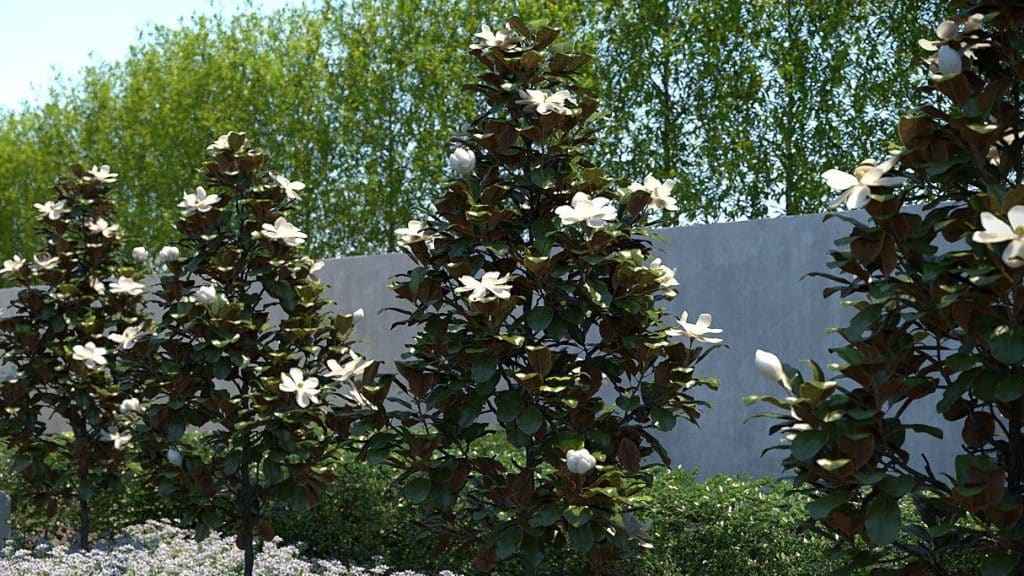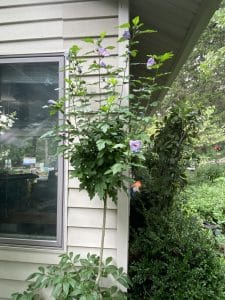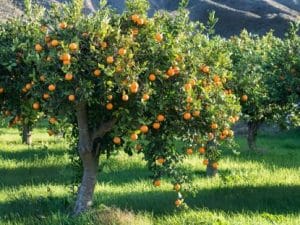Welcome to the wonderful world of magnolia trees in central Texas! In this detailed guide, we will take a tour of the several types of magnolia trees in Texas that grace the landscape. Each species, from the iconic Southern Magnolia to the perfumed Sweetbay and colourful Saucer Magnolia, has its own distinct charm. As we learn about the complexities of planting and caring for these gorgeous trees, we’ll also look at the delicate process of magnolia tree removal. Whether you’re a seasoned gardener or a curious enthusiast, join us as we uncover the secrets that make magnolia trees such a prominent presence in Texas.
Types of Magnolia Trees in Texas
Understanding Magnolia Tree Varieties
Southern Magnolia (Magnolia grandiflora)
It is a classic Texan beauty. This native magnolia has glossy evergreen foliage and big, fragrant blooms, providing timeless elegance to Texas gardens. Its adaptability to diverse climates and soil conditions makes it a popular option among gardeners. Southern Magnolia, with its reputation for being both tough and visually attractive, continues to be a symbol of classic southern charm in the Texas landscape.
Sweetbay Magnolia (Magnolia virginiana)
It is an appealing species among the various magnolias. This deciduous magnolia cultivar is well-known for its fragrant blossoms, which fill the Texan air with a pleasant scent. Sweetbay Magnolia adds a touch of subtle beauty to Texas gardens with its adaptability and unique traits, such as narrow foliage and creamy-white blossoms. As we investigate the intricacies of this species, it becomes clear that Sweetbay Magnolia is an excellent choice for individuals seeking both visual and fragrant pleasure in their outdoor areas.
Saucer Magnolia (Magnolia × Soulangeana)
This has brilliant and beautiful blossoms that make it stand out in early spring. This deciduous magnolia cultivar, while not native to Texas, thrives in the state’s various settings. Saucer Magnolia, with its huge, saucer-shaped blossoms in pink and white, adds a splash of colour to the Texas environment. Its flexibility and eye-catching looks make it a popular choice for adding drama to gardens around the Lone Star State.
Planting and Caring for Magnolia Trees
Ideal soil conditions:
To guarantee your magnolia trees grow in Texas soil, it’s important to understand the optimal conditions. Magnolias prefer well-drained soil with a somewhat acidic pH level. Choose an area where water does not collect, preventing root rot. Soil amendment with organic matter improves fertility and drainage, laying the groundwork for your magnolia’s growth.
Sunlight Requirements:
Meet your magnolia trees’ sunlight requirements to maximize their potential. The majority of magnolia cultivars grow in full sun to partial shade. Adequate sunlight encourages healthy growth and the production of those characteristic, enormous flowers. Finding the perfect balance in placement is critical, allowing enough sunlight without scorching the tree. Understanding the sunshine requirements is essential for growing a healthy magnolia in Texas.
Pruning techniques
These are crucial for maintaining the health and appearance of magnolia trees. Timing is critical; late winter or early spring, before new growth develops, is ideal. Remove dead or diseased branches to give the tree a balanced and pleasant appearance. Pruning also helps to improve air circulation and lower the danger of disease. With the proper care, your magnolia may thrive and become a gorgeous centre point in your Texan garden.
Related Posts:
Magnolia Tree Removal: A Delicate Process
Understanding the Need:
While Magnolia tree removal is a difficult matter, it may be essential in certain circumstances. Recognizing the need for removal is critical, whether it is diseased, poses a safety risk, or has outgrown its place. Diseases such as scale, leaf spot, or powdery mildew can harm the tree’s health and necessitate removal to prevent future spread. Furthermore, if a magnolia becomes structurally unsafe or threatens surrounding structures, a gentle removal operation may be the safest option.
Hiring professionals for magnolia tree removal provides a safe and effective approach. Experts understand the complexities of magnolia trees and use tactics to minimize their impact on neighbouring vegetation and landscapes. Professional removal services manage not only the physical removal but also the disposal and possible replanting. Their expertise protects against collateral damage, allowing your Texas landscape to remain beautiful even without a full magnolia. When it comes to removal, hiring competent professionals ensures a smooth transition while focusing on the health and aesthetics of your outdoor environment.
FAQS
Are magnolia trees acceptable for all regions of Texas?
Magnolia trees thrive throughout Texas, but recognizing individual types and their adaptability is critical. Consult with local experts to get the best magnolia for your area.
How frequently should I water my magnolia tree?
Watering frequency is determined by elements such as soil type, weather, and tree age. A deep watering once a week is usually sufficient, but adapt based on your magnolia’s specific needs.
Can I prune my magnolia tree at any point during the year?
Magnolias can be pruned, but it is best done in late winter or early spring before new growth begins. To reduce tree stress, avoid pruning in late summer or fall.
Is magnolia tree removal expensive?
The cost of magnolia tree removal varies depending on the size, location, and intricacy of the task. Consulting with removal pros can provide more precise estimates.
Conclusion
In this detailed guide, we’ve delved into the intriguing world of Texas magnolias. From planting advice to the delicate process of magnolia tree removal, arm yourself with knowledge to care for these floral jewels. Magnolia trees add timeless charm to your Texas landscape.





